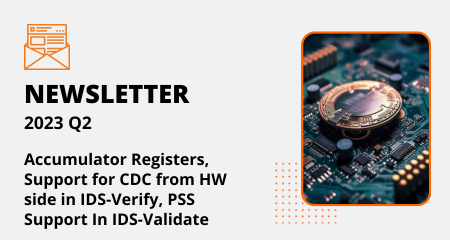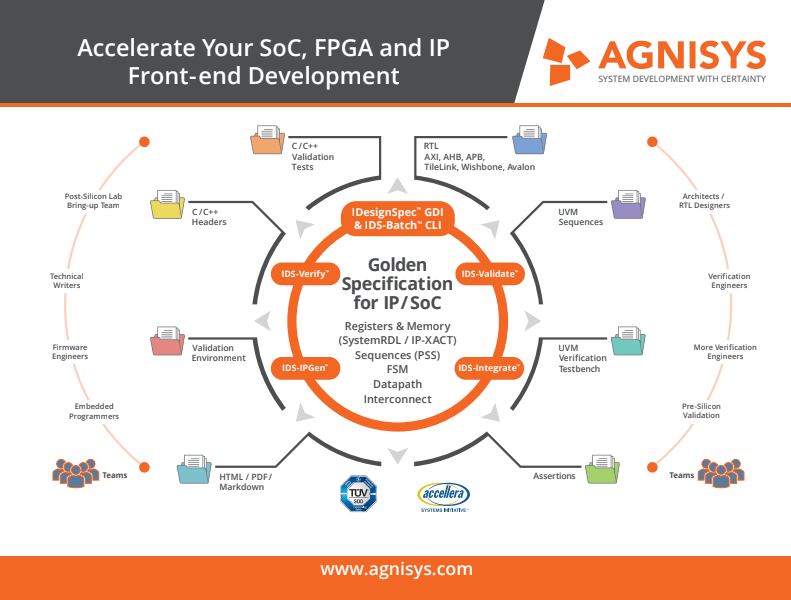
Newsletter 2023 Q2

In the second quarter of 2023, Agnisys delivered a significant collection of enhancements for the IDesignSpec suite. We are marching on our mission to provide golden specification driven complete development flow. At DAC, we presented that mission and it was much liked by the visitors.

From this Newsletter onwards, we have started including a section called “Steps to Start Using”, this will have clear steps for you to start using the feature immediately in your installation. We hope you appreciate the new features and start using them right away.
Here are some of our most significant IDS improvements:
- Support for CDC from HW side in IDS-Verify
- Accumulator Registers
- Support For Python Multiple Output files
- PSS Support In IDS-Validate
In IDS-Verify, CDC from HW side is supported. Metastability is an issue in designs with many clock domains. These costly CDC failures can be avoided by adhering to important design standards and adopting appropriate and tried-and-true synchronization approaches. By automatically creating code that complies with CDC design principles and enabling users to configure various synchronization strategies in accordance with their design needs, IDesignSpec™ significantly aids in addressing these problems. Read More
The accumulator is an essential component of computing systems and is used for a variety of computation activities. They are crucial for carrying out repeated activities and performing arithmetic operations with limited resources because of their capacity to store and collect interim results. When performing multi-step actions, a device sends intermediate values to the accumulator, which are later overwritten as necessary. Read More
The ability to generate numerous Python output files based on hierarchical chip structures has been included as a new feature in IDS to support multi-out in Python output. With the help of this capability, users can easily and quickly retrieve specific Python output files for particular chips inside a hierarchy. Read More
A unified representation of stimulus and test scenarios, useable by a number of users across different levels of integration under various settings, is defined by the Portable Test and Stimulus Standard. Users can declare a set of behaviors using this standard, from which several implementations can be derived. In PSS2.0, the idea of specifying Registers and Sequences was introduced. Three access types, namely Read-Only, Read-Write, and Write-Only, are currently supported. The PSS register model is produced by IDS-Validate using a variety of IDS-supported inputs, including SystemRDL, IP-XACT, IDS-NG, Word, Custom CSV, and others. Read More